Water condensation is when moisture is formed when the air is heated and travels up toward the cooler part of the lens. This mostly happens when there is a crack or an improperly sealed housing. There may be an opening on the back of the housing such as an opened socket that allows moisture to be trapped inside, creating a film of condensation or even a puddle of water gathered at the bottom of the housing.
While the condensation is not a serious issue, it is pretty unsightly and could cause damage to the LED bulb or other components. Fortunately, the situation is not difficult to fix if you follow these simple steps.
Step 1: Remove the housing from the car first. Be careful because you don't want to damage it and cause hairline cracks.
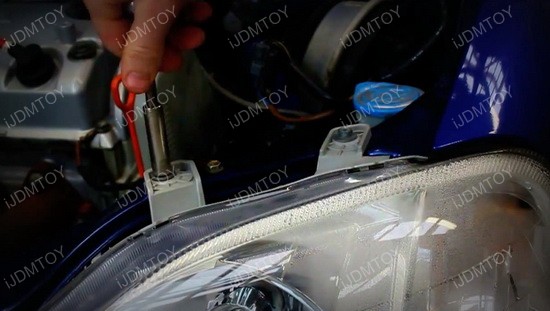
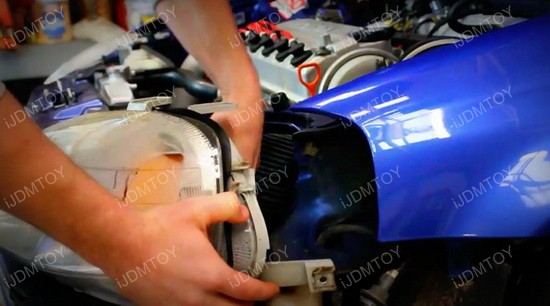
You can see that the headlight used in this tutorial has a thin coating of condensation on it.
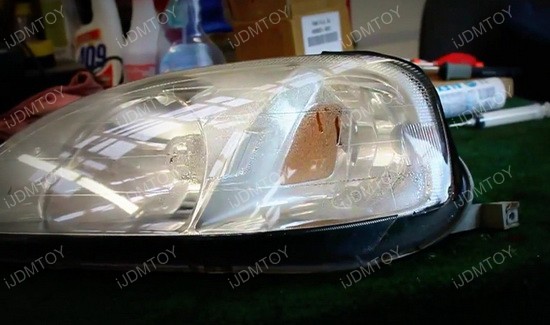
If there's any water inside, you can pour the water out first. This will significantly expedite the condensation removal.
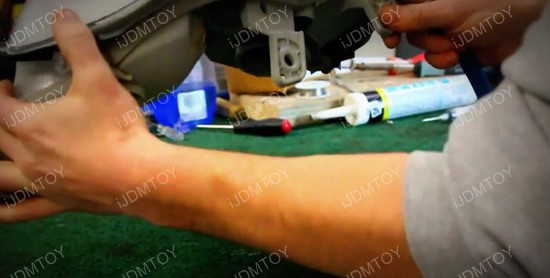
Step 2: This tutorial uses an air hose compressor to forcefully blow the moisture droplets out of the headlight. If you don't have one, you can use a hair dryer on low temperature or just leave all the caps off and place the housing some where with good air flow to allow the condensation to evaporate on its own. Remember do not leave the housing directly under the sunlight. This process can take up to 5 hours, depending on the weather condition.
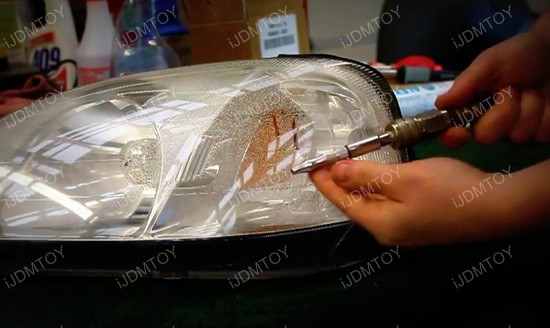
Step 3: You can see the gradual process of the moisture leaving the headlights.
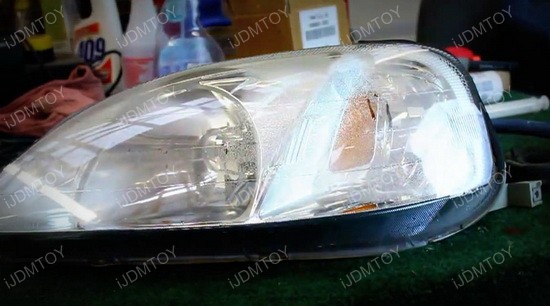
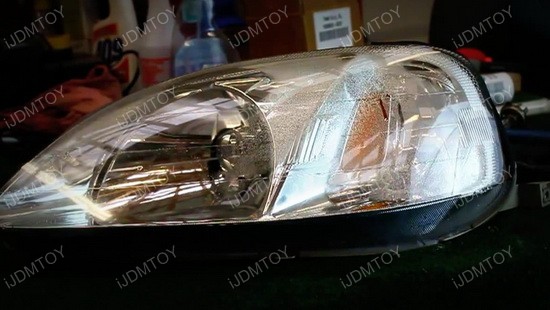
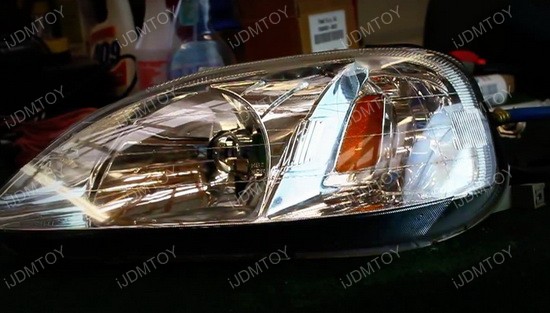
Step 4: Once the condensation has evaporated, carefully inspect the housing for any cracks. Fill a syringe with silicone caulk to seal up any cracks in the headlight. This is how moisture gets trapped in the headlight assembly. When you combine that with poor ventilation, condensation usually develops.
You can get this syringe at your local drugstore like CVS or you can even purchase the pre-assembled package with the silicone already inside of the syringe at auto specialty stores.
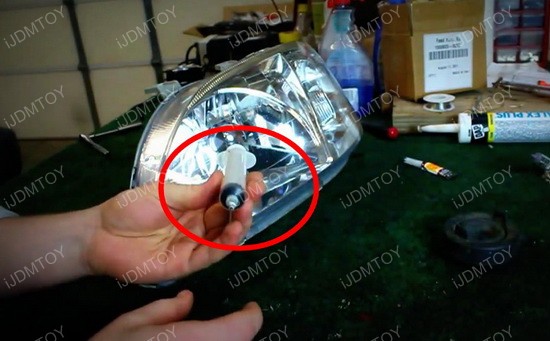
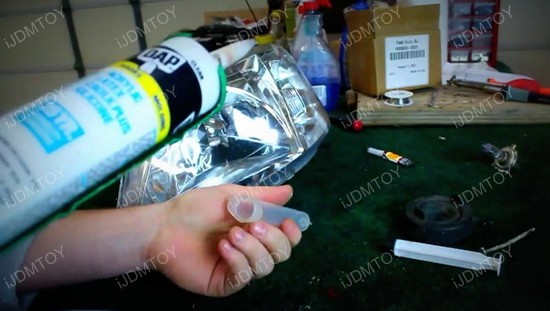
Step 5: Check for any cracks or opening in the headline and use the silicone to seal them.
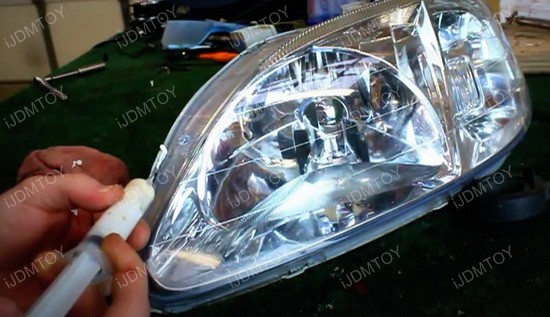
If there are any opened sockets, make sure to cap them. If you don't have the adapters anymore, you can use the duct tape or even silicone to cover them.
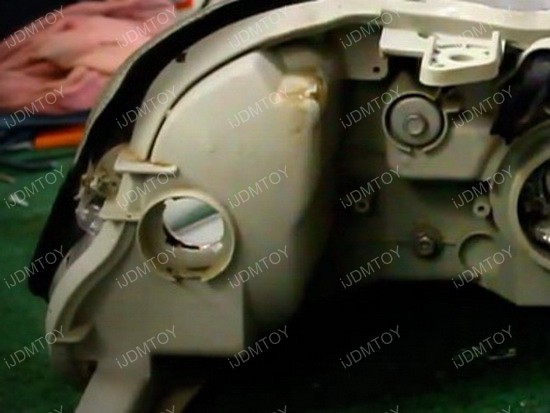
Photo credit goes to Pro Scott



